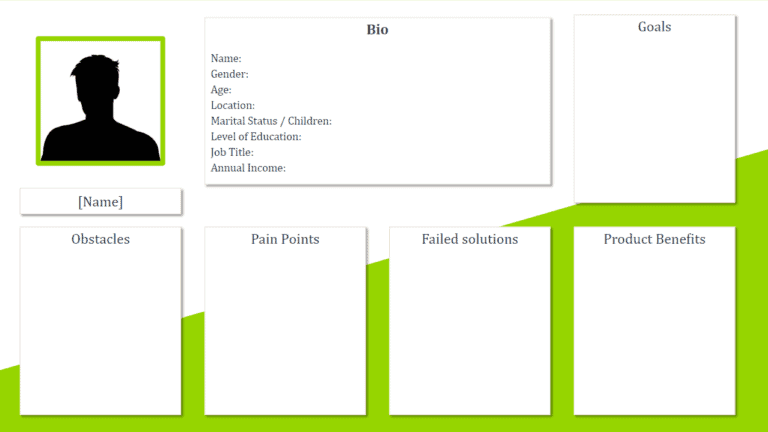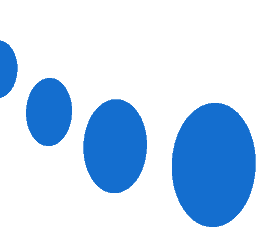Before we begin, a little history…
One morning, I go to a gas station to refuel my car. Another young man was refueling his motorcycle. It had an old-fashioned style, with handlebars and multiple colors. We discussed what made our vehicles different; after all, we’re not too different in terms of age and social status, so it made sense that, despite using two machines for very similar purposes ranging from commuting to exploring new cities. We always found reasons to make our respective vehicles more attractive.
Afterwards, I went home wondering if this conversation had been more than a brief encounter between two strangers… We were simply 2 Buyers Personas. 1 preferring the comfort of a car and the other the freedom of a motorcycle.
What is a buyer persona?
A buyer persona is a fictional representation of your ideal prospect. This is the most desirable combination of characteristics you want to see in an individual, which also includes demographic and behavioral information about them, as well as emotional needs or reactions to what they’ve bought before.
How is a buyer persona different from a target?
The idea behind buyer personas is that each one represents a specific type of customer. This enables companies to tailor their message and marketing strategies to best reach these customers with offers, products or services designed for them.
To create effective campaigns, it’s important not only to understand who your existing customers are, but also to consider how potential new customers might want things done differently from existing customers.
Let’s take an example to clearly differentiate the target from the buyer persona.
Target audience:
Wellness coach, aged between 30 and 50, living in Chicago.
Buyer Persona :
George is 45, married with two children. He lives in Chicago and runs a successful coaching business that helps people overcome their psychological barriers to success through regular monthly seminars organized by himself and one of his partners. They regularly earn over $70,000 a month so far, but George himself feels overwhelmed because he’s overworked and micromanaging in many areas, resulting in ever-increasing costs. All this combines to make it impossible for George to see his family, and he’s exhausted.
Knowing the problems of other coaches in his field. He wants to create a solution for himself and other coaches, enabling them to spend more time with their families. He’s willing to take risks because that’s what makes life interesting; he appreciates everyone’s efforts and is a meritocrat. Honesty and integrity are very important values to him!
The difference between a target and a buyer persona is that the former describes demographics, while the latter refers to behaviors.
The next time you design a marketing persona, think about your target audience. What are its demographic characteristics? Do they have specific interests or desires that could influence the way they buy products and services in today’s market?
By defining this information from the outset, you can guarantee the success of your targeting, your copywriting and therefore your prospecting campaigns, which will lead directly to an increase in appointments!
By creating a customer avatar, you can design messages that are more likely to appeal. You’ll meet George’s problems and needs with this personalized campaign for him!
Need help writing Persona Buyers?
What are the advantages of the Buyer persona?
It’s clear that we want to reach as many people as possible with our message. And the only way to do this is to offer coaching sessions and seminars using various acquisition channels such as social media platforms, conferences, Linkedin … etc. It’s a good strategy, isn’t it?
Well, not necessarily! In an age when information is spread faster than ever by its place of distribution, you should never think you’re reaching your target audience simply because there has been some form of exposure (in numbers) to your products/services, which may have cost nothing.
Never confuse: Number of channels AND channel relevance. If you want to talk to everyone, you talk to no one (a well-known adage in growth circles).
Go to the channel most used by your Buyer Persona and make a good segmentation. Use your webscraping skills to contact only relevant people. I invite you to consult our linked article on the subject of scraping.
Example of a Buyer persona strategy
Situation A :
What if you could involve all your Buyer personas? Imagine you have a market of a million people waiting for your message. You decide that the best way to proceed is not to address “everyone”, but rather to make an effort with those who have shown their interest by subscribing or following on certain social media channels beforehand. We know that it takes time and resources to reach these people. How do you maximize these two elements without compromising the quality of the content that will keep them interested until they convert (buy)?
If you have a large budget. So you can take a sample of 200,000 people, which may seem huge at first, but when it’s divided into smaller groups, it becomes easier to understand what makes each group unique and how they will react differently depending on the situation or the product whose efficacy is being tested.
Let’s say you convert 1% of your sample. So 2,000 people become buyers.
Situation B:
Now imagine you decide to work with a specific buyer persona. Out of 1 million people, only 100,000 meet your requirements and can be buyers, not demonstrators/users as before!
This means that there are half as many targets, which considerably reduces the cost of marketing efforts, since 100,000 people are now enough for awareness-raising or advertising, instead of 200,000.
It also helps reduce the time spent trying out new methods, when we already know who our audience is,saving money and getting better results.
The conversion rate is now at least double what it was before. And with your new, more personalized message for them. You go from a 1% to a 2% conversion rate. So 2,000 people
That’s right, you read that right. With half the budget originally used to acquire 2,000 customers, we now have 2 Avatars ( 2 samples of 100,000 = 200,000) in our marketing campaign, which will translate into another thousand paying customers!
In conclusion:
By creating a marketing persona, you’re able to narrow your target market and focus on the people most likely to buy from your company.
Knowledge is power, and in our case, that could mean the solution to the budget problem.
The ability to tailor your marketing efforts and connect with a specific customer in the most personal way will help you plan all these strategies (sales, brand awareness, etc.) more effectively. You start to see prospects as real people rather than faceless demographics. You give them an identity through their buyer persona.
It then becomes easier for them not only to see how things can benefit them, but also to feel like someone worth investing time to understand better – this is the first part of creating relationships based on mutual respect that maximize satisfaction for both parties.
Now that you’re convinced of the importance of the Buyer persona, how many do you need?
The answer to the question of how many marketing personas you need isn’t quite so simple. It depends on the type of business and the budget, but a good rule of thumb would be a buyer persona for now with potential customers (or even better with current customers) who can guide you on how to write your Buyers persona.
How do you write a Buyer Persona?
Now that you know what buyer personas are, it’s time to create your own! To help you in this process, I’ve included a template for creating them at the end of my blog post.
Have you ever been caught off guard by someone’s tone of voice? If so, this article is for YOU! Buyer persona models are designed as an easy way to identify who your target customer is. With all the information you need in one place, selling will be easier than ever (and maybe even more fun!).
The buyer persona model should be used as an exercise in understanding how your ideal customer thinks, feels and acts. As you fill it in, try not to think of yourself but rather to imitate what they would do if they looked at this form from their point of view ̓ the aim being to get a clear picture of where you stand in relation to those around us.
Template Buyer Persona :
- Name :
- Gender :
- Age :
- Marital status / Children :
- Location:
- Job title :
- Annual income :
- Level of education :
Objective:
I’m on a mission for [insérer l’objectif] because it will allow me to be freer and happier.
Pain points :
However, I am currently [statut actuel], and this is preventing me from reaching [statut souhaité].
The reason that limits my growth is [raison].
Obstacles
To reach my goal, I tried [tentative ratée/obstacle n° 1] without much success, which led me to [résultat].
Failed solutions
I have tried [ancienne solution] in the past, but failed because of [reason(s) for failure].
How the product/service helps me:
Since I found [produit/service], I’m now able to [objectif].






